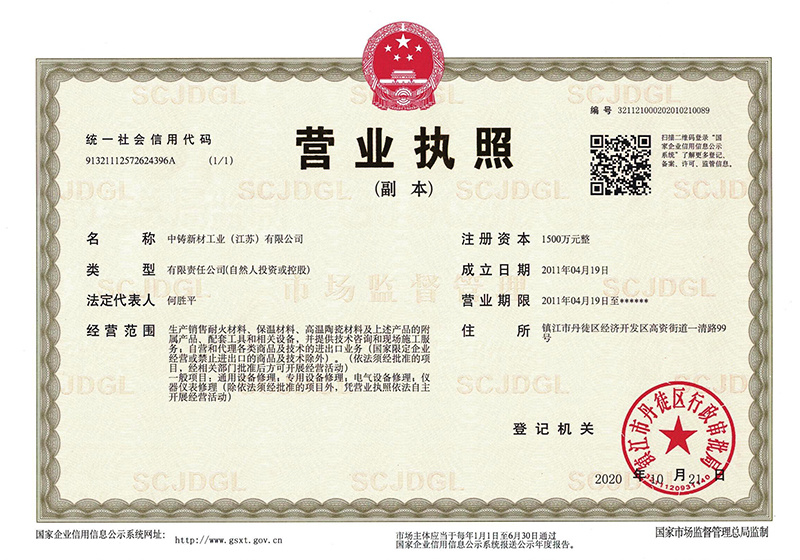News
SINO-FOUNDRY—professional refractory manufacturer
Unleashing the Potential of Alumina Refractory Materials in Modern Architecture
2025-01-11
Unleashing the Potential of Alumina Refractory Materials in Modern Architecture Table of Contents 1. Introduction to Alumina Refractory Materials 2. Properties that Make Alumina Refractory Materials Stand Out 3. Applications of Alumina Refractory Materials in Architecture 3.1. High-Temperature Applications 3.2. Fireproofing in Building Construction 4. The Role of Alumina in Sustainability and Gree
Unleashing the Potential of Alumina Refractory Materials in Modern Architecture
Table of Contents
1. Introduction to Alumina Refractory Materials
2. Properties that Make Alumina Refractory Materials Stand Out
3. Applications of Alumina Refractory Materials in Architecture
3.1. High-Temperature Applications
3.2. Fireproofing in Building Construction
4. The Role of Alumina in Sustainability and Green Building
5. Comparison with Other Refractory Materials
6. Future Trends in Alumina Refractory Materials
7. FAQs
8. Conclusion
1. Introduction to Alumina Refractory Materials
Alumina refractory materials, composed primarily of aluminum oxide (Al2O3), have emerged as one of the most significant components in the construction and decorative materials sector. Their unique composition offers remarkable resistance to high temperatures and oxidation, making them indispensable in various architectural applications. As modern architecture increasingly demands materials that can withstand extreme environmental conditions, the versatility and durability of alumina refractory materials have positioned them as a go-to solution for architects and builders alike.
2. Properties that Make Alumina Refractory Materials Stand Out
The **properties** of alumina refractory materials are what truly set them apart in the realm of construction. Here are some of the defining characteristics:
2.1. High-Temperature Resistance
Alumina refractories can withstand temperatures exceeding 1,600°C (2,912°F). This makes them ideal for applications involving extreme heat, such as kilns, furnaces, and other industrial settings.
2.2. Excellent Corrosion Resistance
These materials exhibit strong resistance to chemical attacks, ensuring their longevity in various environments. This property is particularly beneficial in industrial applications where exposure to harsh chemicals is common.
2.3. Low Thermal Conductivity
Alumina refractories have low thermal conductivity, making them suitable for applications requiring thermal insulation. This property contributes to energy efficiency in building structures.
2.4. Mechanical Stability
The mechanical strength of alumina refractories helps them maintain structural integrity under high stress and temperature fluctuations, making them reliable for architectural use.
3. Applications of Alumina Refractory Materials in Architecture
Alumina refractory materials find a wide range of applications in modern architecture, ensuring safety, efficiency, and aesthetic appeal.
3.1. High-Temperature Applications
In modern architecture, certain structures, such as **industrial buildings** and **power plants**, require materials that can endure extreme temperatures. Alumina refractory materials are commonly used in the construction of **furnaces**, **boilers**, and **kilns**, where their high-temperature resistance is crucial.
3.2. Fireproofing in Building Construction
One of the most critical applications of alumina refractory materials is in fireproofing buildings. With increasing concerns about fire hazards, architects are turning to these materials to meet safety standards and regulations. Alumina’s fire-resistant properties enable it to protect structural elements, ensuring that buildings remain safe during a fire incident.
4. The Role of Alumina in Sustainability and Green Building
As sustainability becomes a focal point in modern architecture, alumina refractory materials offer several **environmental benefits**. Their longevity reduces the need for frequent replacements, lowering the carbon footprint associated with building maintenance. Additionally, many alumina refractory materials are sourced from natural minerals, contributing to sustainable building practices.
5. Comparison with Other Refractory Materials
When examining refractory materials, alumina stands out when compared to competitors, such as silica or magnesia-based refractories. Each material has its unique advantages, but alumina's combination of high-temperature resistance, durability, and versatility makes it the preferred choice in many applications. This section will detail how alumina refractory materials outperform others in specific scenarios.
6. Future Trends in Alumina Refractory Materials
The architectural sector is continuously evolving, and the trends surrounding alumina refractory materials are no exception. We anticipate developments in their formulations and applications, focusing on enhancing performance and sustainability. For instance, the integration of **nanotechnology** into alumina refractories may lead to materials that are even lighter, stronger, and more resistant to environmental stressors.
7. FAQs
7.1. What are alumina refractory materials made of?
Alumina refractory materials are primarily composed of aluminum oxide, often combined with other minerals to enhance specific properties.
7.2. Why are alumina refractory materials important in architecture?
Their high-temperature resistance, corrosion resistance, and mechanical stability make them essential for ensuring the safety and longevity of structures.
7.3. Can alumina refractory materials be used in residential buildings?
Yes, alumina refractory materials can be utilized in residential buildings, particularly for fireproofing and in areas exposed to high temperatures, such as kitchens.
7.4. How do alumina refractory materials contribute to sustainability?
Their durability reduces the need for replacements, and many are sourced from natural materials, making them a sustainable choice for modern architecture.
7.5. What trends are shaping the future of alumina refractory materials?
Trends include advancements in nanotechnology, increased emphasis on sustainability, and innovative applications in both industrial and residential architecture.
8. Conclusion
Alumina refractory materials are not just components of construction; they represent a fusion of performance, sustainability, and safety. As modern architecture continues to demand materials that can withstand the tests of time and environmental challenges, alumina refractories will play a pivotal role. Their unique properties and versatile applications make them indispensable in creating safe, efficient, and resilient structures. Embracing the potential of alumina refractories is essential for architects and builders who seek to push the boundaries of modern design while adhering to sustainable practices.
Related News
2024-11-05
Zhongzhu New Materials Industry sincerely invites you to participate in the 24th International Forum and Exhibition on Recycled Metals.

WeChat public account

View mobile website
Address : No. 99, Yiqing Road, Gaozi Street, EconomicDevelopment Zone, Dantu District, Zhenjiang City
Fax : +86-511-85683066
E-mail : sales@sfr168.com
Website : https://www.sfr168.com
Copyright©2023 Sino-Foundry Refractory(Jiangsu) Co.,Ltd. Powered by:www.300.cn
Copyright©2023 Sino-Foundry Refractory(Jiangsu) Co.,Ltd.
IPV6 | SEO | Cloud Information



